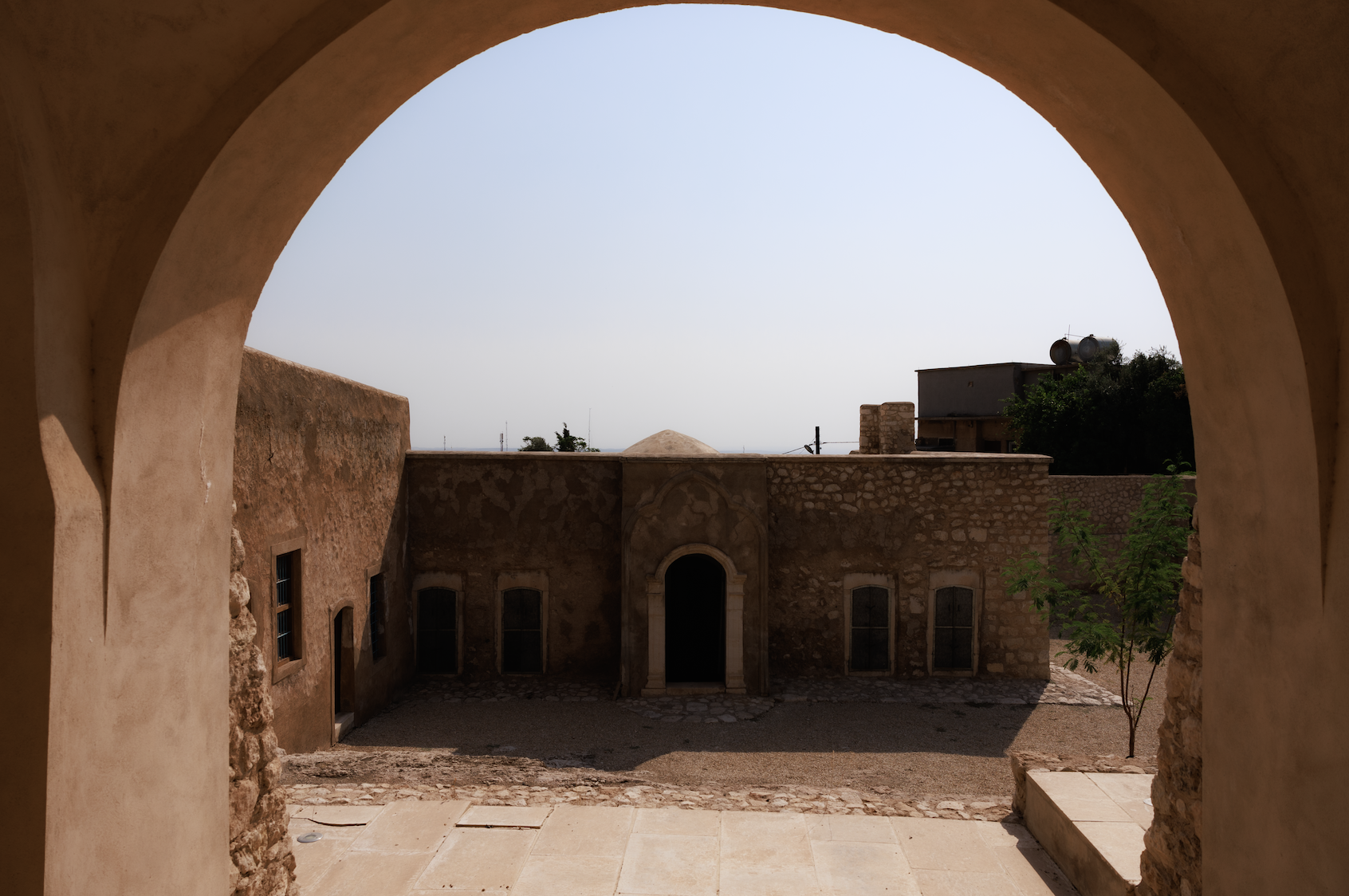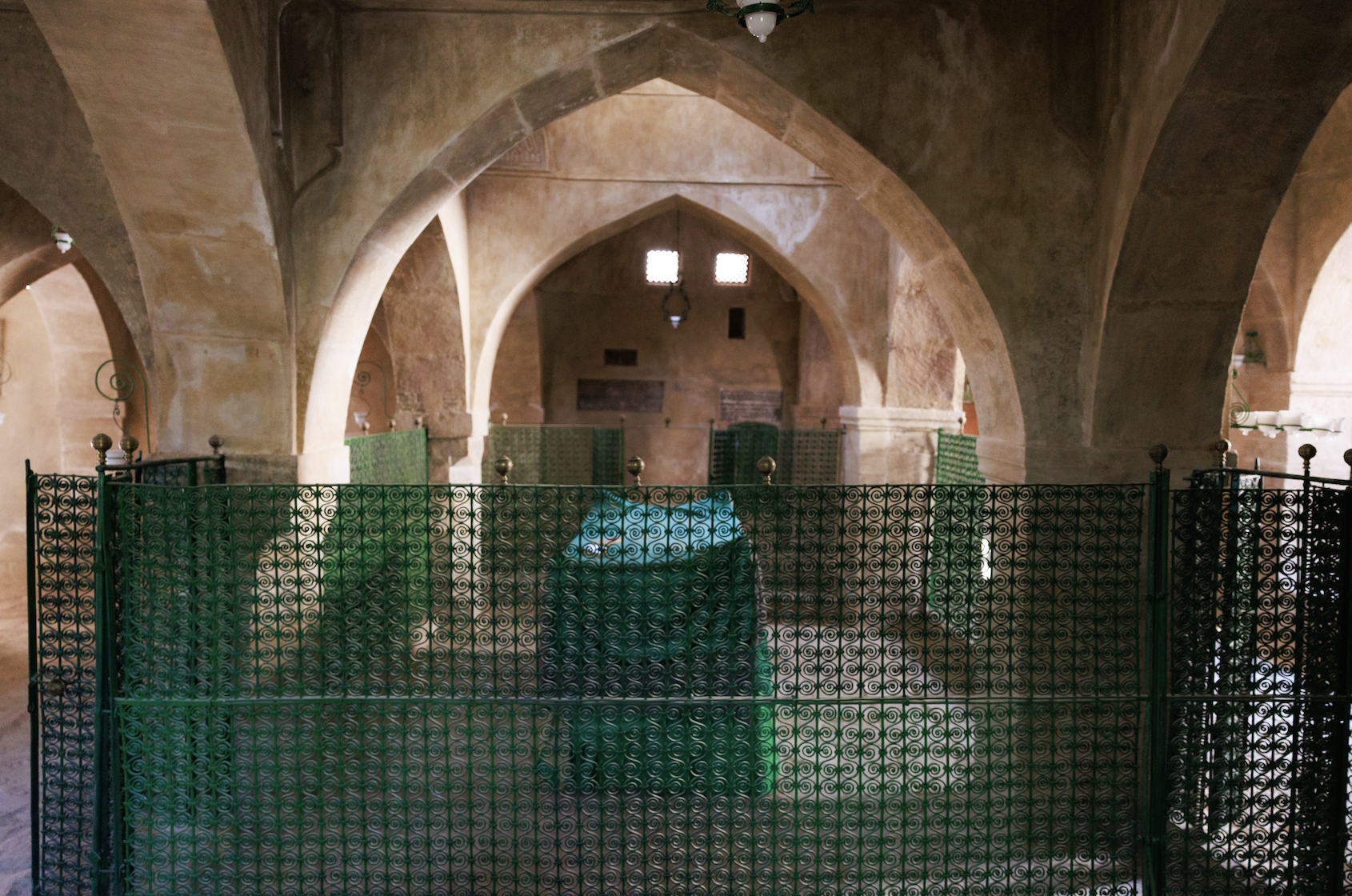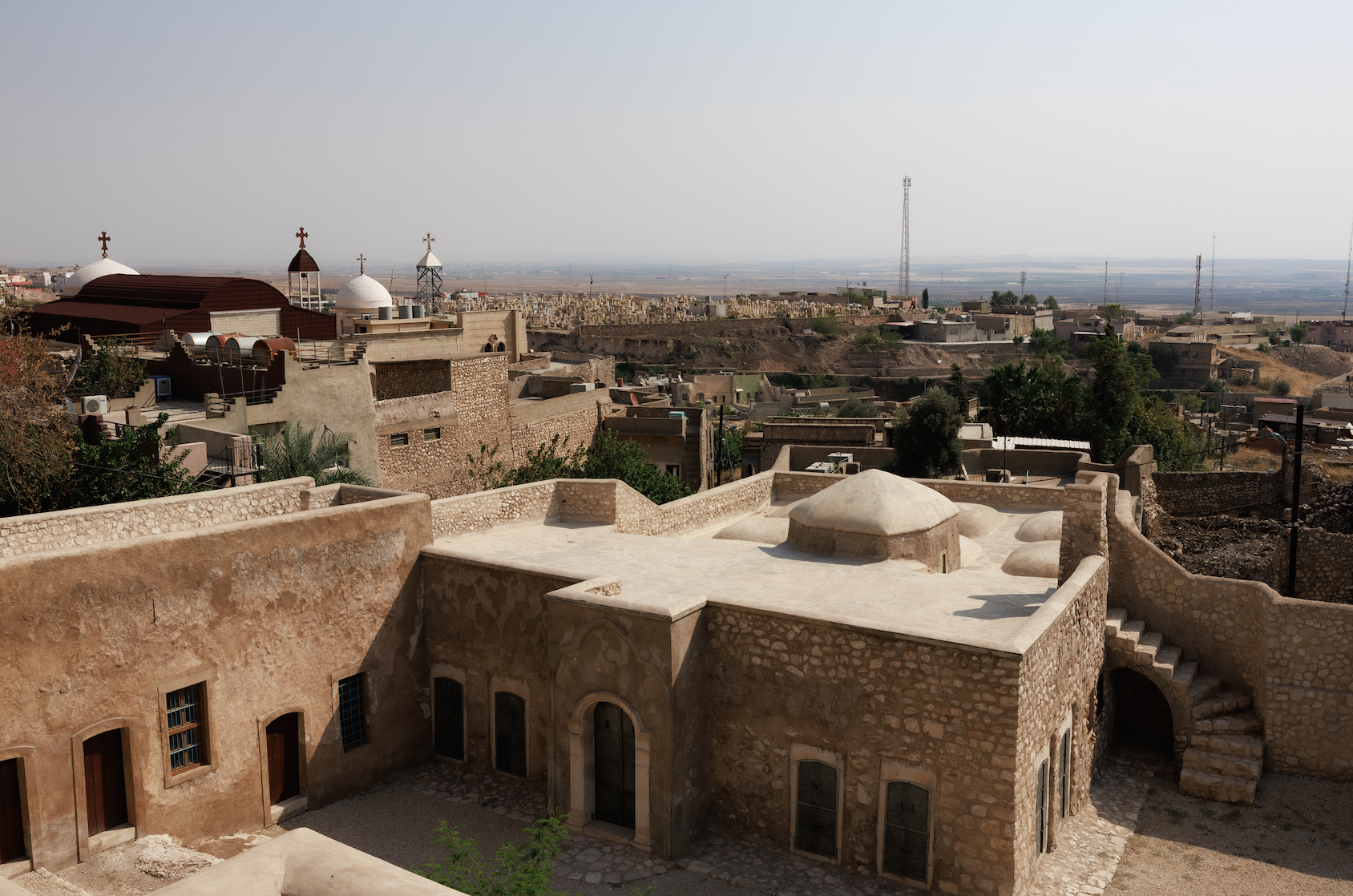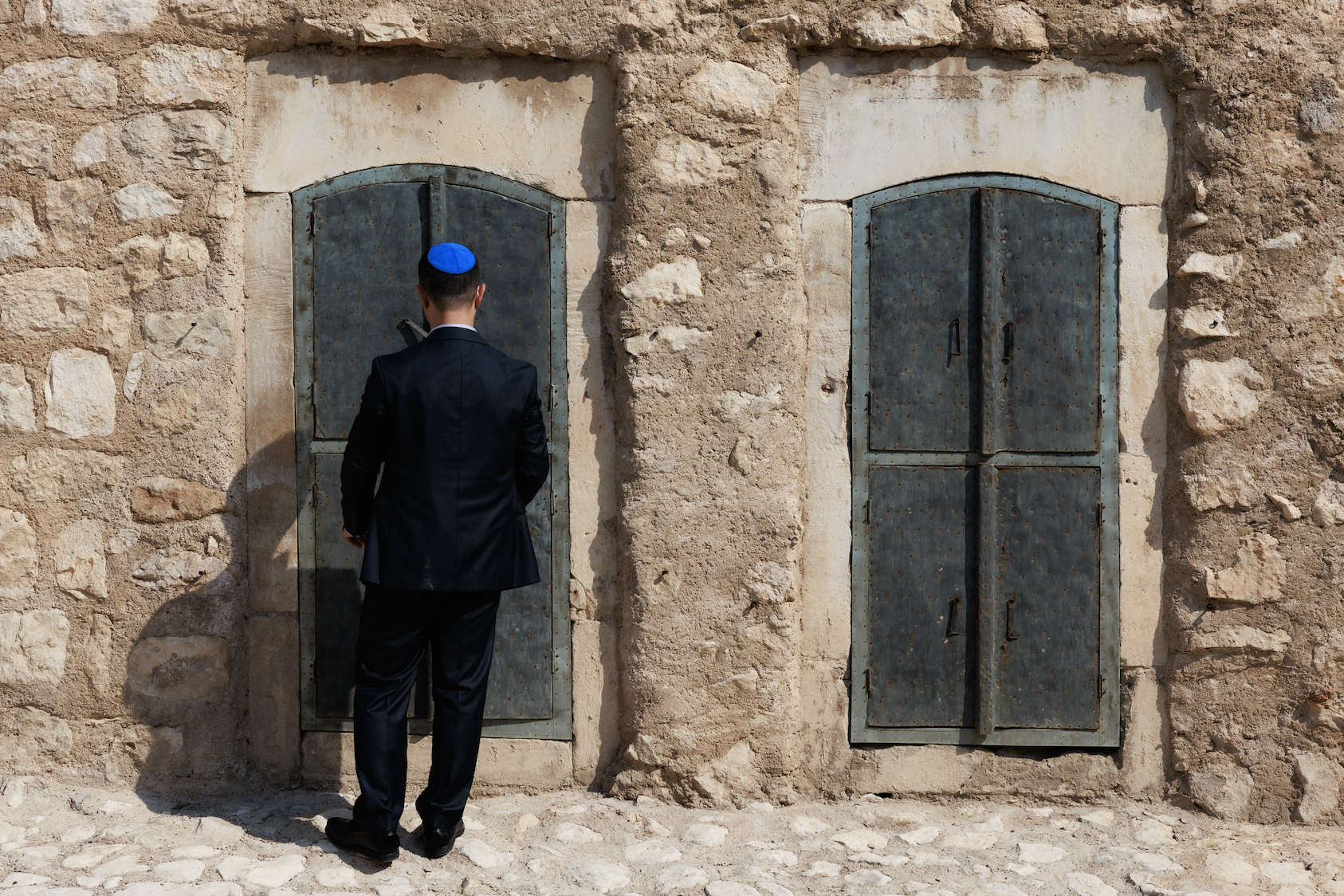Kurdistan is the land of the Sun and fire and has been home to prophets from different sects and religions for thousands of years. With shrines and holy places scattered throughout the land, Kurdistan bears witness to the peaceful coexistence of different religious and cultural components.
In the historic city of Alqosh, specifically in the Qasha neighborhood northwest of the city, lies the shrine of a Jewish prophet known as Nahum the Prophet, or Nahum Alqoshi, who is respected by Muslims, Christians, and Jews alike. The shrine is a religious landmark of great significance to followers of the Jewish religion.
Despite its simplicity, the tomb of the prophet Nahum – who is mentioned in the Old Testament and the Hebrew Bible – is distinguished by its unique architecture. It is surrounded by an eight-meter-high wall, with an inner courtyard that occupies a third of the total area of the building. The entrance is a stone door engraved with ancient symbols, and bare stones cover the floor of the building. The old wooden doors are decorated with copper and iron and retain their beauty despite the passage of time. In the middle of the building is a rectangular tomb covered with green fabric, and the roof is supported by 22 columns topped with crescent arches.
Inside the tomb, the walls are decorated with six panels engraved in Hebrew that narrate aspects of the prophet’s life. The tomb is surrounded by a handmade metal window and the complex includes a religious school, a cellar, and cabinets for holy books, in addition to an internal cave.

Antiquity’s diversity
Lara Zara, the mayor of Alqosh, confirmed in an interview with Kurdistan Chronicle that the shrine “is an integral part of the city’s history, and the coexistence between the residents of the region represents a model to be emulated in Kurdistan and Iraq.”
“The diversity of ethnic, religious, and sectarian components in the region is a unique case and a source of pride for everyone, as everyone lives in harmony without notable problems,” she said.
The shrine of the Prophet Nahum symbolizes the religious and cultural coexistence in Kurdistan, where believers of different religions meet in one place, emphasizing the common human values and mutual respect that have always distinguished this region from others.
Zara explained how agriculture plays a pivotal role in establishing the principles of coexistence among the town’s components. “I hope that the shrine will be transformed into a major source of revitalization for the city’s tourism sector,” she said.

Historically, Jewish sources define Kurdistan as the oldest homeland to which Jews were exiled after their captivity in Babylon. It is believed that the origin of Kurdish Jews dates to the ten tribes of the Children of Israel who were exiled in the eighth century BC. The number of Kurdish Jews was estimated at 50,000 or more before 1948, when their Iraqi citizenship was revoked and their properties confiscated.
The Prophet Nahum was the seventh of the prophets whose prophecy was recorded in the Book of the Twelve. His name in Hebrew means “counselor” or “comforter,” and he is the writer of one of the books of the Old Testament that predicted the destruction of Nineveh, the capital of the Assyrian kingdom. His prophecy was fulfilled in 612 BC by the Babylonians and Medes.
According to the 12th century AD Jewish traveler Benjamin of Tudela, Nahum lived in the early seventh century BC, and his tomb is in the village of Alqosh in the Kurdistan Region. The Book of Nahum is the 34th book of the Old Testament and consists of three chapters that predict the fall of Nineveh.

Revitalization
Modern historians say that the tomb of the Prophet Nahum was built in 1796, but was subjected to acts of vandalism and neglect, especially during the reign of the former Ba’athist regime of Iraq. Yet, thanks to the efforts of the Kurdistan Regional Government and the U.S. Consulate in Erbil, the tomb was restored and saved from complete demolition in 2020.
Ranjdar Cohen, head of the Aramic Organization for Communal Peace Development, points out that the Jewish community suffers from changes that occur to Jewish places and shrines when they are restored. Reportedly, the removal of the Star of David from the tomb of the Prophet Nahum is likewise changed.
In recent years, the shrine has become a prominent tourist attraction, visited by people of different religions to seek blessings. “The shrine has become a symbol and an integral part of the city’s history and heritage, pointing to the peaceful coexistence between different ethnic groups, sects and religions,” said Qahtan Salim, a local resident living on the outskirts of Alqosh.
The establishment of Israel in 1948 was a turning point in the lives of the Jews of Kurdistan and Iraq, leading the vast majority to emigrate in 1949. However, a few Jews remained in the Kurdistan Region but were forced to change their religion or hide it out of fear of persecution.

The fall of the former regime in 2003 strengthened coexistence among different religious groups, Cohen explained, noting that the strength of understanding that exists in Kurdistan helped some Jews to reveal the religion of their fathers and grandfathers, and some even began to practice their religious rituals openly and ignore politics.
Although current Iraqi laws prevent Jewish tourists from traveling to Iraq and Kurdistan, which negatively affects religious tourism, Cohen states that many Jews wish to visit the shrines of their prophets, especially the shrine of the Prophet Nahum, which holds a special place for them.
Before the displacement of the Jews and the establishment of Israel, the shrine of the Prophet Nahum was a destination for many Jews coming from various Kurdish and Iraqi cities and towns to worship and practice religious rituals, in addition to holding weddings and other ceremonies.
The shrine of the Prophet Nahum remains evidence of Kurdistan’s rich history and cultural and religious diversity and a symbol of the peaceful coexistence that has characterized the region throughout the ages.

Hemin Baban is a Kurdish journalist based in Erbil.